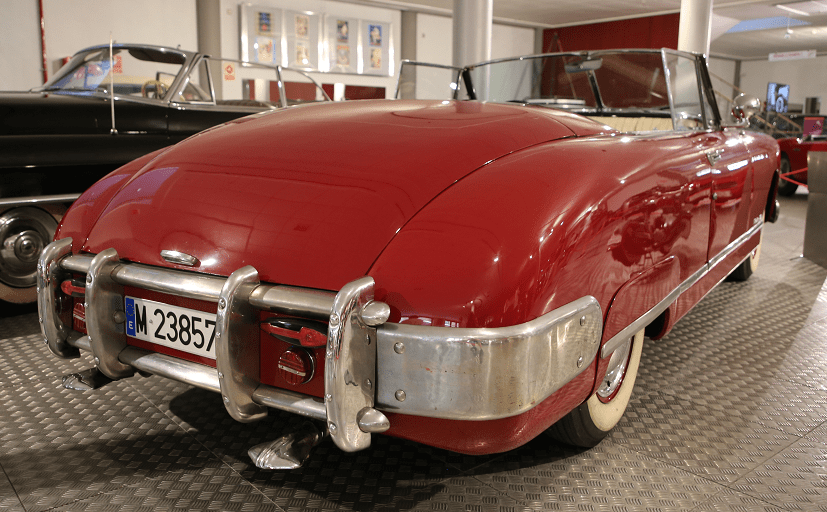Muntz Jet 52 M from 1952, 205 HP, max. speed 190 km/h.
The Muntz Jet is a two-door hardtop convertible built by the Muntz Car Company in the United States between approximately 1949 and 1954. It is sometimes credited as the first personal luxury car. Developed from the Kurtis Sport Car (KSC) that was designed by Frank Kurtis, it was produced and marketed by Earl “Madman” Muntz.
The car was powered by one of two V8 engines, either a 160 hp (120 kW) Cadillac engine or a 160 hp (120 kW) Lincoln engine, and it was equipped with either a General Motors Hydramatic automatic transmission or a three-speed Borg-Warner manual transmission. The Jet was streamlined, featured numerous luxury appointments, and was equipped with safety features that were not standard on most cars of its day, including a padded dashboard and seat belts.
Production of the Muntz Jet occurred in Glendale, California; Evanston, Illinois; and Chicago before ceasing in 1954. The car sold for $5,500 in 1953 (about $51,500 in 2017), but cost $6,500 to produce. In total, Muntz lost approximately $400,000 on the venture. Only 198 Jets were built, an estimated 50 to 130 of which are still in existence. By 2016, fully restored cars had sold for over $100,000 at auction. Author Matt Stone called the Jet “one of the fastest and best-performing American cars of the time” while Muntz claimed that the 1958 Ford Thunderbird was inspired by his Jet.
The Muntz Jet was developed from the Kurtis Sport Car (KSC), a two-seat, aluminum-body sports car designed by Frank Kurtis. Muntz bought the rights to the KSC, along with its parts and tooling, from Kurtis Kraft for $200,000. Sam Hanks, who would later win the 1957 Indianapolis 500, contributed to the redesign and re-engineering necessary to create the Muntz. The Jet was built with a solid hardtop.
Two different V8 engines were used in the Jet: a 160 hp (120 kW) Cadillac engine, and a 160 hp (120 kW) Lincoln engine.
The first Jets to be constructed, in Glendale, California, had the Cadillac engine and aluminum bodies, while those built later in Illinois instead had the Lincoln engine and steel bodies. The cars were equipped with General Motors Hydramatic automatic transmissions, while a three-speed Borg-Warner manual transmission was also available as an option.













